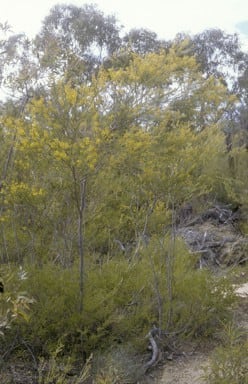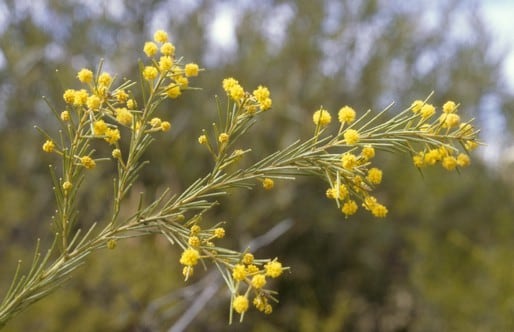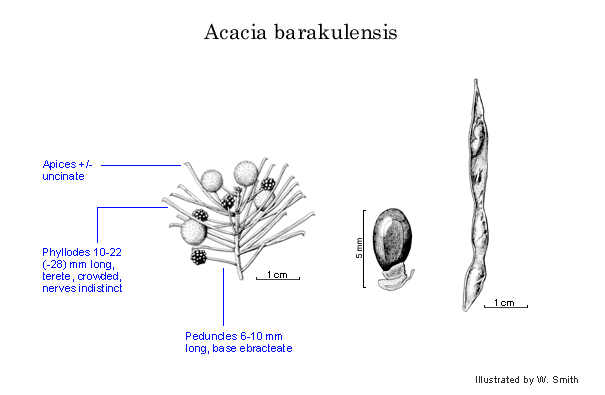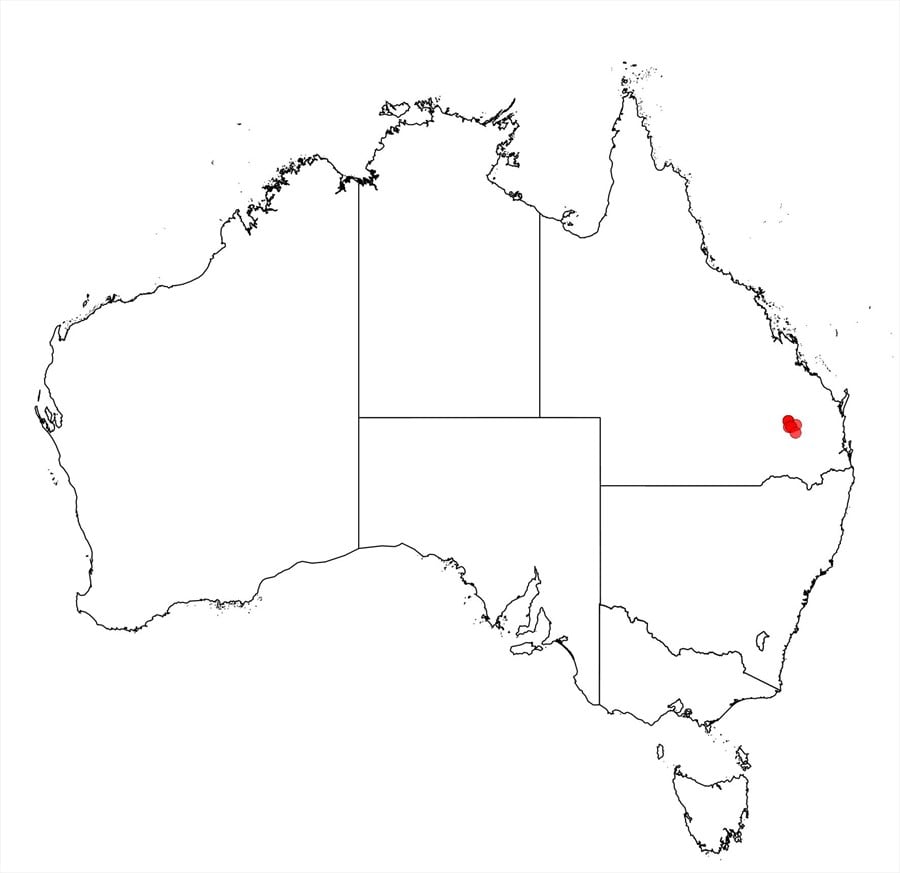Acacia barakulensis Pedley
WATTLE
Acacias of Australia
Common Name
Waajie Wattle
Family
Fabaceae
Distribution
Known only from the Barakula State Forest, N of Chinchilla, south-eastern Qld.
Description
Shrub to c. 2 m high. Branchlets sparsely hirsutellous, slightly resinous. Phyllodes crowded or subcrowded, sometimes a few subverticillate or subfasciculate, ascending to erect, slender, ±straight, 10–22 (–28) mm long, 0.6–1 mm wide, terete to subterete or occasionally ±slightly compressed, nerves not evident but normally with some longitudinal furrows, obliquely and excentrically mucronate or rostellate, often subuncinate or sometimes uncinate, sparsely tuberculate, glabrous or occasionally sparsely hirsutellous; gland minute, obscure or absent, 5–7 mm above pulvinus. Inflorescences simple, 1 per node; peduncles 6–10 mm long, normally glabrous, ebracteate at base; heads globular, (20–) 25–35-flowered, golden, slightly resinous. Flowers 5‑merous; sepals c. 1/2–2/3-united. Pods linear, straight-edged or constricted between seeds, to c. 4 cm long, 4 mm wide, firmly chartaceous, brown, glabrous, slightly resinous. Seeds longitudinal, oblong, 3.7–4.2 mm long; aril oblique.
Habitat
Grows in sand in eucalypt communities.
Specimens
Qld: Barakula State Forest, L.M.Copeland 2689, J.J.Bruhl and I.R.Telford (BRI, NE, PERTH).
Notes
Acacia barakulensis was noted by B.R.Maslin, Fl. Australia 11A: 459 (2001) under A. johnsonii. It is a member of the ‘A. johnsonii group’ very closely related to the more widespread A. burbidgeae which is distinguished by its shorter peduncles and generally longer, more obviously incurved phyllodes with the lower margin broader than the upper (narrow phyllodes therefore appearing ±triquetrous in section when dry).
FOA Reference
Data derived from Flora of Australia Volumes 11A (2001), 11B (2001) and 12 (1998), products of ABRS, ©Commonwealth of Australia
Author
B.R.Maslin
This identification key and fact sheets are available as a mobile application:
URL: https://apps.lucidcentral.org/wattle/
© Copyright 2018. All rights reserved.










